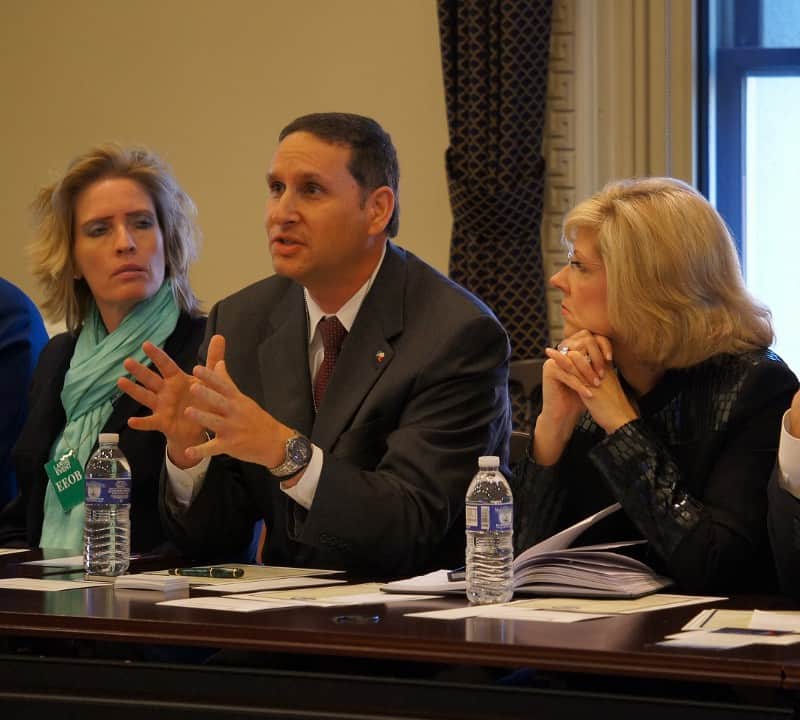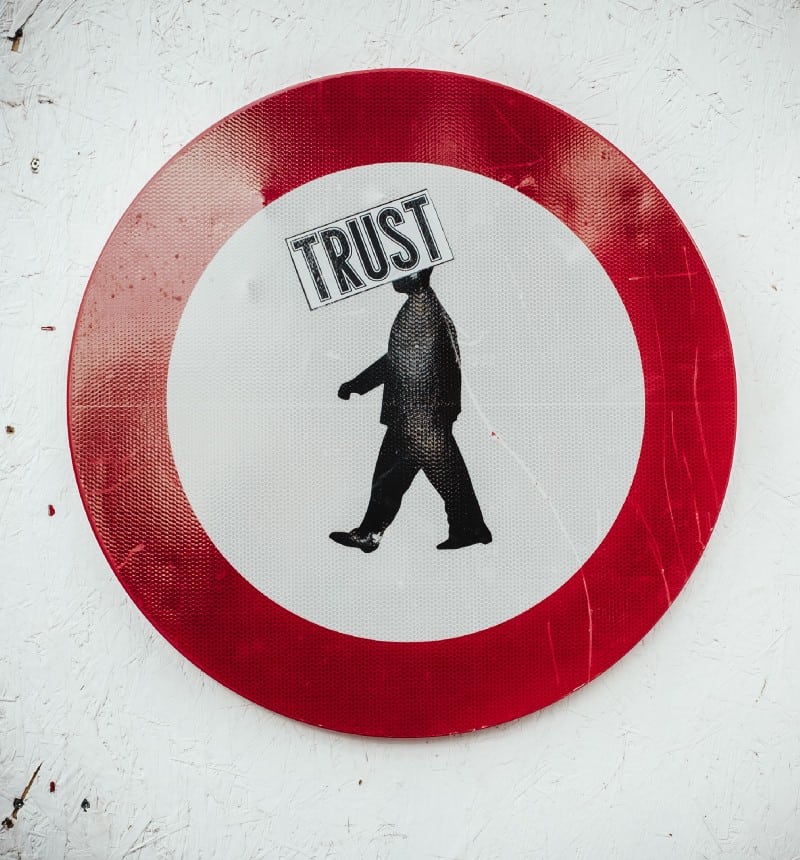A Conversation with Yoram Solomon, founder of the Innovation Culture Institute
This is part of my series on thought leaders in the innovation space. Check out the other articles here.
Yoram Solomon is a thought leader in the innovation field who focuses on the nature of creativity and the important role organizational culture plays in supporting innovative thought. A former Israeli Defense Forces marksman, he’s adept at nailing a physical target. However, Yoram’s sharpshooter precision isn’t limited to the shooting range. After years of studying the cognitive processes surrounding knowledge work and creativity, he’s pinpointed a single, necessary foundation: trust.


Lessons from the 90s
Defining a concept is easier when you first establishing what it is not. According to Yoram, innovation efforts that focus on specific technologies have a flawed approach. It’s tempting to jump on the bandwagon of the next big thing in technology. But the Gartner hype cycle illustrates where this approach quickly runs into issues.
In the beginning of the cycle, a new technology appears to be the answer to all the world’s problems. As organizations and individuals begin to explore its applications, interest begins to wane sharply as experiments fail to produce useful results. “There have been quite a few technologies that just died by the sidelines because they weren’t producing anything that was of value. Yet, we tend to latch onto those buzzwords.”

Nowadays, many companies are focused on innovation borne out of must-have technologies such as Artificial Intelligence, Blockchain, Internet of Things, etc. These technologies are often considered the starting place for innovation, much like the website was in Silicon Valley in the late 90’s. “All you had to do if you wanted to be successful and innovative [in the 90’s] was just buy a website, add the dot com to your name and success was guaranteed.” The tunnel vision of the technology-based approach of yesterday provides a cautionary tale to modern organizations. “Of course, we know how [the dot com boom] ended. I think that one of the problems we have today is our focus on technologies.”
“All you had to do if you wanted to be successful and innovative [in the 90’s] was just buy a website, add the dot com to your name and success was guaranteed.”
Left without a clear starting point, many companies resort to a focus on processes to bring innovation into the organization. “There are people who swear by design thinking, lean startup, agile, anything…The thing is you focus on one process as if this process is going to generate ideas, and it doesn’t. It’s facilitating the generation of ideas.”


More resources isn’t the answer
Companies experiencing a dearth of ideas often fall into the trap of believing more resources thrown at the problem leads to better results. Yoram describes this fallacy through the story of the airplane. Samuel Langley, head of the Smithsonian Institute in the late 1900’s, received a $50,000 grant and a charter to build the first heavier-than-air, manned flying machine. On December 8th, 1903, he declared failure despite years of work and ample resources. “The funny thing is [that] not nine days later, on December 17th, 1903, the Wright brothers, two bicycle makers from Ohio on a budget of $1,000, actually made it. So it’s not about money.”
This holds true for program resources as well as using financial rewards to incentivize employees. Creativity is a critical element of innovation, but the relationship between motivation and creativity lies in intrinsic factors. During his PhD research, Yoram set out to answer why people are so much more creative when they work for startups than in mature or large companies. He found that it mostly boils down to the type of work people are doing and whether it’s labor-intensive or knowledge-intensive. “If it’s just pure hard labor or effort, then if you give me incentives, I will work faster. That’s where financial incentives work. However, when it comes to tasks related to creativity, using your brain more than your hands or legs, financial incentives don’t help. They actually hurt.”

This conclusion is supported by an experiment done by scientist Sam Glucksberg adapting the candle problem created by psychologist Karl Duncker in which participants are given a box of tacks, a candle, and matches. The objective of the experiment involves attaching the candle to a wall so that, when lit, the wax doesn’t drop on the floor. Glucksberg extended the original experiment by offering participants in one group a financial incentive for solving the creative problem faster. The surprising results? Participants offered a financial incentive took 3.5 minutes longer to solve the problem than those who weren’t offered compensation.
Yoram’s own research shows the role resources can play in creativity as well. One person he interviewed shared that working in a startup forced him to be more creative because he didn’t have access to resources. Doing more with less led to more creative solutions. “So we tend to think that [if] we throw money at the problem we’re going to solve it. That’s true if what you’re trying to do is produce more light bulbs in the same amount of time. If what you’re trying to do is produce more ideas, don’t throw resources at it.”
“If what you’re trying to do is produce more ideas, don’t throw resources at it.”
So what should innovation programs be based on? Through his PhD research, Yoram discovered that “the one element that causes a company to be innovative on a consistent, continuous basis is having an innovation culture. And innovation culture is based on one thing, that’s trust.”

Structural gaps in building innovation culture
Yoram considers the implementation of innovation programs in two ways. First, he evaluates the cause and effect chain. “If you want to be innovative, you need to deploy the latest technologies and the latest processes in a very pragmatic way. But, in order to do that, you need to be motivated to go into ideation sessions so that they are going to be effective. For that to happen you need to have an innovation culture. For innovation culture to happen you need to have the right behaviors. To have the right behaviors, you need to have trust.”
The cause and effect chain Yoram describes creates a clear picture of why innovation programs that start at the endpoint — technologies, processes, and resources — often struggle to achieve productive results. “It starts with trust, behaviors, cultures, innovation culture, and then you have ideation processes, technologies, and you’ll find the next big thing.”
The Five I’s
Yoram works with organizations seeking to innovate by taking them through his 5 step process:
- Introspection
- Intervention
- Ideation
- Implementation
- Innovation
The first step is characterized by a line he borrowed from the opening sequence of the pilot of the HBO TV show Newsroom. “The first step in solving any problem is recognizing there is one.” Starting with Introspection, Yoram challenges organizations to reflect on the level of trust that exists. Before the following steps can be fruitful, barriers to trust must be identified and removed.
The second step, Intervention, identifies what steps need to be taken to remove barriers to trust. “Once I can tell you that we have an innovation culture, [we can] move on to ideation.”
Ideation — step 3 — is where processes like design thinking are productive. Employees who do the difficult work of making it through steps 1–3 became frustrated when ideas are shelved and nothing happens with them.
The fourth step, Implementation, is critical in putting the ideas from step 1–3 into action as well as maintaining high morale. Successful execution of steps 1–4 leads to step 5, Innovation.
The trickle down effect
Yoram has found that building an innovation culture starts with the leadership team.
“You start with the leadership team for two reasons. One is [that] the leadership team controls the largest amount of resources. The second is [that] whatever the leadership team’s behavior is trickles down. It’s imitated, copied, and followed by the rest of the organization.”
If those behaviors don’t exist at the highest level, there’s still hope for building innovation culture further down the chain. “The best example of this is Kelly Johnson who created the Skunk Works group at Lockheed Martin. He said, ‘I don’t care how the organization above me behaves, all I care about is that we’re going to have the right culture in our organization below me.’”
After years of work and study, Yoram has a formula for building trust. One of the first elements is shared values. “If we don’t have shared values, I’m not going to trust you, and you’re not going to trust me.” Another aspect of building trust is the intensity of human interaction. “A big part of this goes back to the 10,000 hour rule that Ericsson found. The more time I spend with you, the better we’re going to build trust.”
Yoram points out that the time of interaction also hinges on the intensity of that interaction. “The work of Albert Mehrabian, published in the book Silent Messages, says that 7% of our intent is conveyed through our words, 38% through our tone of voice, and 55% through our body language. So one powerful thing I encourage is to spend more time face-to-face with the people you need to work with and trust.”
Constructive disagreement
As human interaction increases, so does the likelihood for disagreement. Yoram believes a key behavior in continuing down the path of trust building is the ability to have constructive disagreement. “Let’s say that you and I are arguing over something. What happens if all of a sudden you have an idea that will make my case instead of yours. Would you share it?” The answer to this question helps to elucidate the level of trust between colleagues. “If the answer is no, then we’re not really conducting a constructive disagreement. You have to get to the point where, if I have an idea that would actually make your point, I feel comfortable bringing it up.”

The constructive nature of this disagreement is that the goal for each individual is not to win the argument but for both parties to reach the shared goal of their team. “Unfortunately, what we do today is have destructive disagreements where everything becomes emotional and irrational, and really all I want is to win. Maybe even more than I want to win, I want you to lose and that is a problem.”
The option that many people opt for in the face of destructive disagreement is the safer, less conflict-ridden approach of agreeing to disagree. “When we say let’s agree to disagree, what I’m saying is you have your position. I don’t care why. I have my position. I don’t care to share with you why, so let’s agree to disagree and not pursue this. That means that our focus is on winning and not on reaching the overall goal.”
Prospect theory & human interaction
Another aspect of human interaction in trust building is the ratio of positive to negative experiences. Drawing conclusions from the work of Daniel Kahneman and Amos Tversky, Yoram posits that positive and negative interactions at a ratio higher than 3:1, respectively, produce a net positive experience and contribute to greater trust building.
“We are three times more worried about negative things than we are about positive things. If you and I have an interaction and it’s negative, it’s going to take three positive interactions just to compensate.”
Yoram, ever a proponent for constructive disagreement, believes that positive interactions can include arguments. “A positive interaction can be that you and I will argue to the point where we lose our voices, but if we reach a conclusion and we’re both happy with what we reach, that would be a very positive outcome.”

New, useful, and feasible
With innovation culture well established, organizations can consider ideas through the lens of innovation which Yoram defines as something new, useful, and feasible. He bases this definition off what the U.S. Patent and Trademark Office uses to determine whether something should be allowed to be a patent.
“I can file a patent for the first teleporter. It’s new. It doesn’t exist. It is useful. It allows us to go from one place to another without using roads or consuming fuel. It’s a bit problematic when we get to the feasible part because I really don’t know how to [build] it.”
Innovation has to meet those three criteria, “but as far as what it can be — it can be a product, a service, a process, or a business model. Uber did not invent a car. They created a new business model.”
Within those categories, innovation can be incremental or radical. Incremental innovation has significant value to Yoram. “USB 3.0 was incremental, but it has a lot of value because there are more than four billion ports [shipped] every year.” Radical innovation, the other extreme, supplants an existing approach entirely.
“Gary Hamel said once in a Stanford executive morning briefing, ‘Those who live by the sword are shot by those who don’t.’”
Revenue alone is a weak measurement
In formulating his metrics for innovation, Yoram looks for a few key characteristics. “The data has to be available, and it has to be relatively easy to measure and calculate.” Measurement approaches that consider revenue more generally run into problems when evaluated against this criteria. The New Product Vitality Index (NPVI), considers the percentage of gross revenue generated from products launched in the past X years. “One of the problems is, how do you define X? For example, is it what percentage of revenue we generate from a product that didn’t exist four years ago?”

To illustrate the problem, Yoram compares the iPhone 6S and the vacuum cleaner. The iPhone 6S didn’t exist four years ago, and neither were later models like the iPhone 8. “Do we count the revenue from the iPhone 6S as revenue from innovation because it didn’t exist four years ago?” On the other hand, vacuum cleaners last forever in the market and there’s a lot of brand loyalty. “So if I asked myself what percentage of my revenue is generated for both
Yoram’s measurement of choice, which he calls the Growth Innovation Index (GII), instead focuses on percentage of profit growth.
“If you have products that are in the first half of their market life cycle, this is where you make a lot of profit. Once we reach maturity, that’s when the product margins become cutthroat.”
For Yoram to view a company as innovative he wants to see that a majority of their products are in the first half of their market lifecycle where a higher margin of profit can be gained. “I’m not talking about revenue. What I care about is how profit grows in your company. This is what distinguishes an innovative market leader from a ‘me too’ player.”
Pragmatism in innovation
Yoram approaches the idea of failure with humor. “The funny thing is I never failed in my life. I was always successful. Obviously that’s not true. I failed more than I’ve succeeded.” But Yoram believes failure that involves learning is success.
His experience with PCTEL taught him the value of pragmatism in innovation. In 2000, PCTEL was the second fastest growing company in Silicon Valley that endeavored to reduce the cost of dial-up modems by relying on the CPU’s processing power in order to power the modem. When DSL came into the picture, PCTEL attempted to use the same strategy to lower the cost of DSL modems. “Today, when I teach at SMU I tell [my students] there are four factors that make your company successful. One of them is trust and another one is pragmatism. Where PCTEL failed [with DSL] was a lack of pragmatism. There are reasons why a DSL modem will never be internal to a PC. [It’s] because you want to share it. PCTEL did not realize what their immediate customer, which at this point was the service provider, was going to face when deploying an internal DSL modem.”
Customers who were unable to get DSL service in their area were forced to send back the entire PC, not just the modem. “Why as a PC manufacturer or service provider [would] I want that? It sunk about $10,000,000 of investment because the project lacked pragmatism.”
“I truly believe the one thing that stops every organization, the most innovative in the world, is not having trust.”
The thing that excites Yoram the most right now is helping organizations build trust. He begins engagements with the question, “Do you think you have a high level of trust?” For organizations who answer “no”, Yoram advises them to start with trust and innovation will come. “How do you know I’m excited? Because I work 16 to 18 hours a day, seven days a week and I don’t feel like I’m working. I feel that I have this mission now. I truly believe the one thing that stops every organization, the most innovative in the world, is not having trust.”
If you want to read my other articles about innovation experts and practitioners, please check them all out here.




